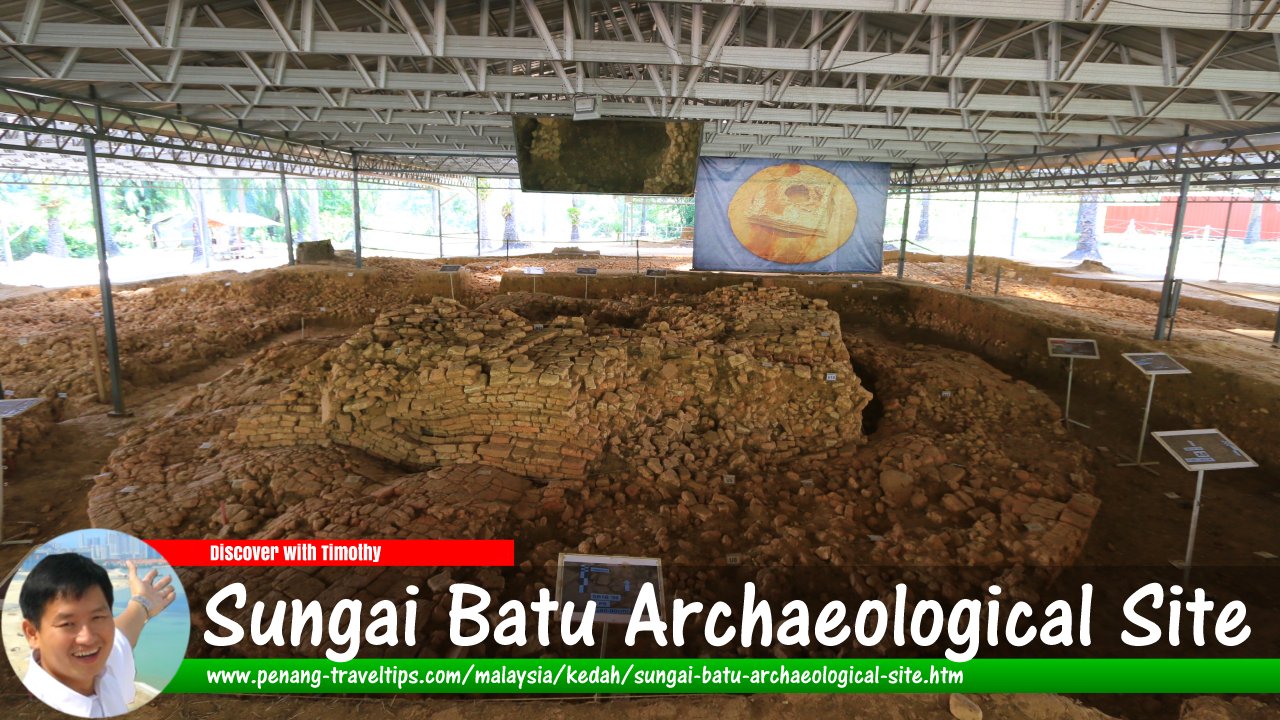 Sungai Batu Archaeological Site (23 April 2017)
Sungai Batu Archaeological Site (23 April 2017)
Sungai Batu Archaeological Site (GPS: 5.69532, 100.45425) is a major archaeological site in Bujang Valley, Kedah. The complex sprawls over both sides of main road (which is labelled on Google Maps as Jalan Pintasan Semeling, but I do not see any road sign when I go along that road myself).
The Sungai Batu Archaeological Site is presently the most recent excavations being conducted at Bujang Valley. It is being conducted by the Centre for Global Archaeological Research of Universiti Sains Malaysia, which is presently (as of 2023) under its director Professor Dr Stephen Chia, with cooperation of the National Heritage Department. The centre began archaeological research in the Bujang Valley on 9 March, 2007, and is still conducting excavation today (2 August 2023) at the Sungai Batu Archaeological Site.
The archaeologists believe that the Sungai Batu site dates back to the 5th century BC. This makes it the oldest civilization in Southeast Asia, predating Borobudur and Angkor. To me, it makes sense that the Hindu sojourners would have arrived in Kedah before they could reach Java or Cambodia.
Dato V. Nadarajan, who wrote the book Bujang Valley, The Wonder that was Ancient Kedah hypothesized that the site may have been an iron smelting settlement. After it is smelted, the iron is transported by ships on the Sungai Batu back to India. He brought me to the Sungai Batu Archaeological Site and showed me around, explaining about what the discoveries as we visited one site to the other.
Various structures have been unearthed at the Sungai Batu complex, which account for some 50 site excavations. From these, archaeologists are able to determine that the site was located by the river (in this case, the namesake Sungai Batu). They have uncovered 10 jetties or wharves and other structures which kilns.
Perhaps the most interesting structure to be uncovered is a brick monument comprising a circular base onto which was built a square pedestal that has a round hole in the middle. Shards of pottery have been found around this structure, suggesting that offerings may have been place around it. The archaeologists theorized that this could possibly be a ritual site for the animistic local community.
Unless you are a hardcore enthusiast, you are likely to be engulfed with information overload when you arrive at the Sungai Batu Archaeological Site. There are so many tents and structures on both sides of the road. You are allowed to visit it, if you first register with the guard house.
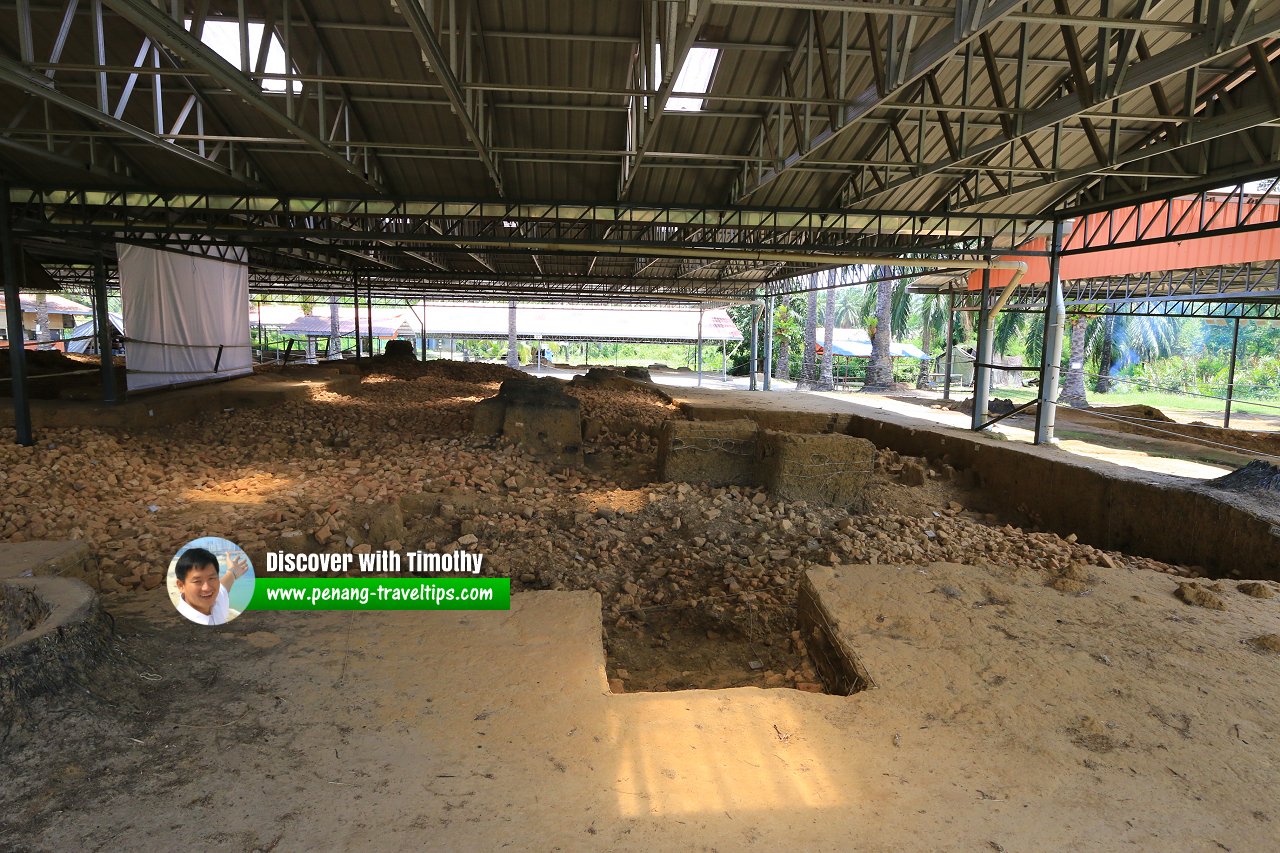 This is Site SB1B, the Ritual Site at Sungai Batu Archaeological Site (23 April 2017)
This is Site SB1B, the Ritual Site at Sungai Batu Archaeological Site (23 April 2017)
The ancient structure at site SB1B has been dated using optically stimulated luminescence (OSL) technique to be 110 CE. That means, it remained buried for some 1,900 years, at a depth of 1.5 metres before it was rediscovered. According to archaeological interpretation, the structure was probably used by an animistic community. The structure is said to be oriented towards Gunung Jerai.
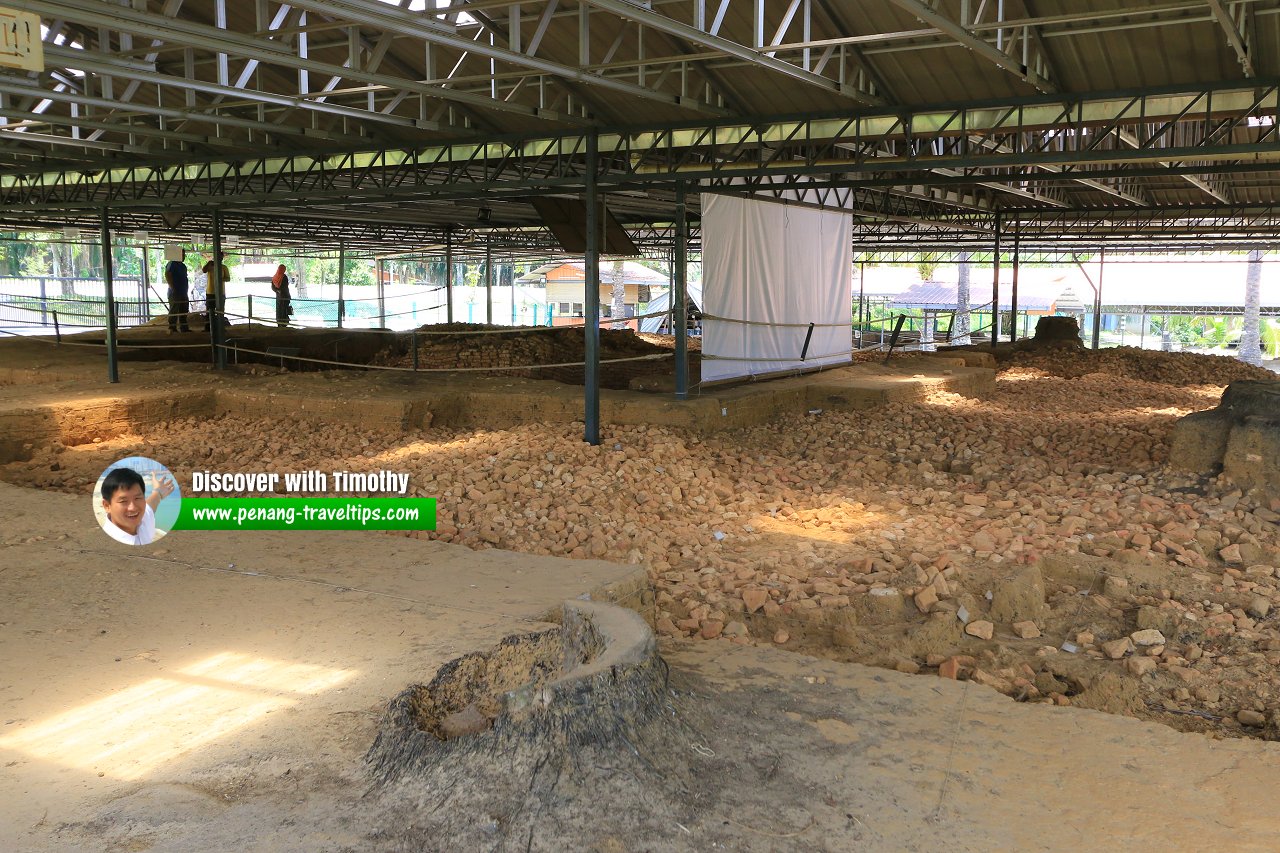 Sungai Batu Archaeological Site (23 April 2017)
Sungai Batu Archaeological Site (23 April 2017)
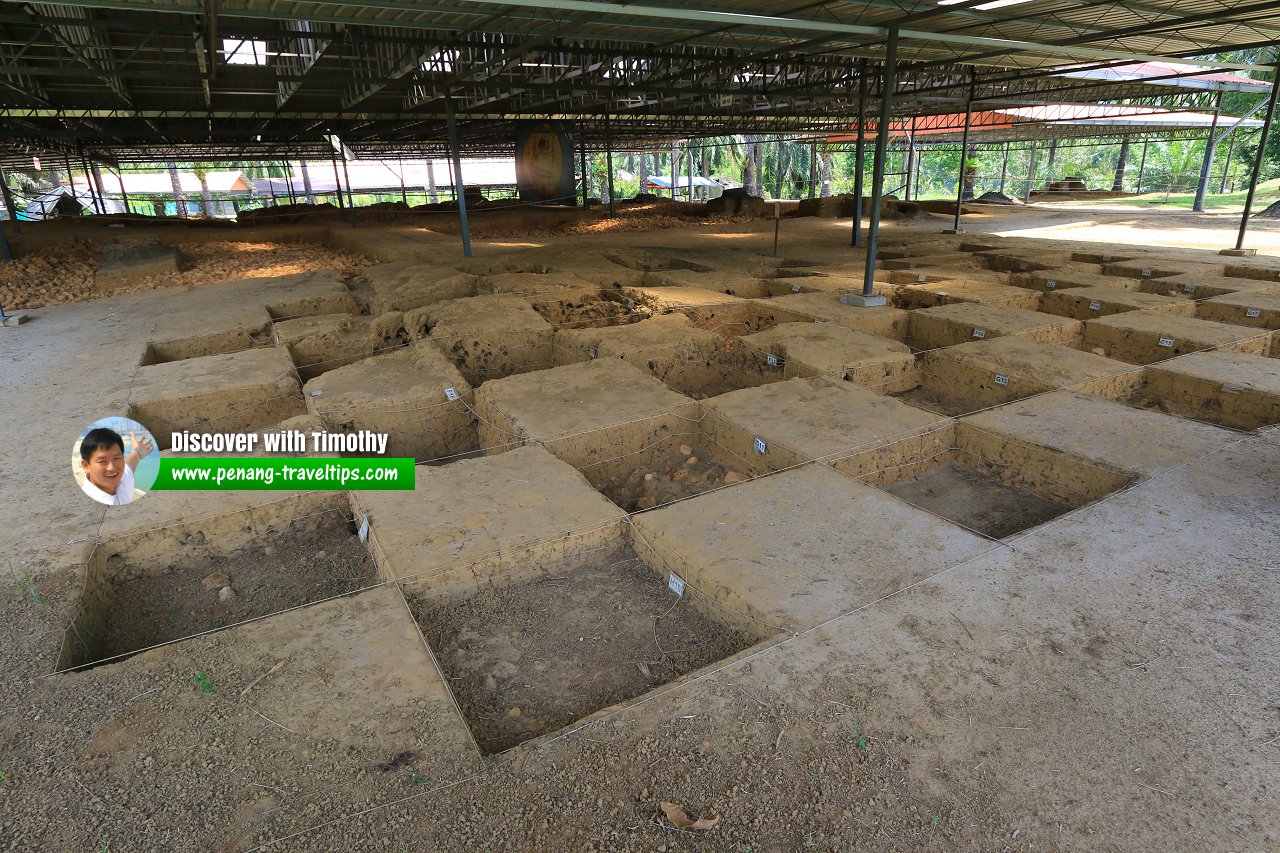 Sungai Batu Archaeological Site (23 April 2017)
Sungai Batu Archaeological Site (23 April 2017)
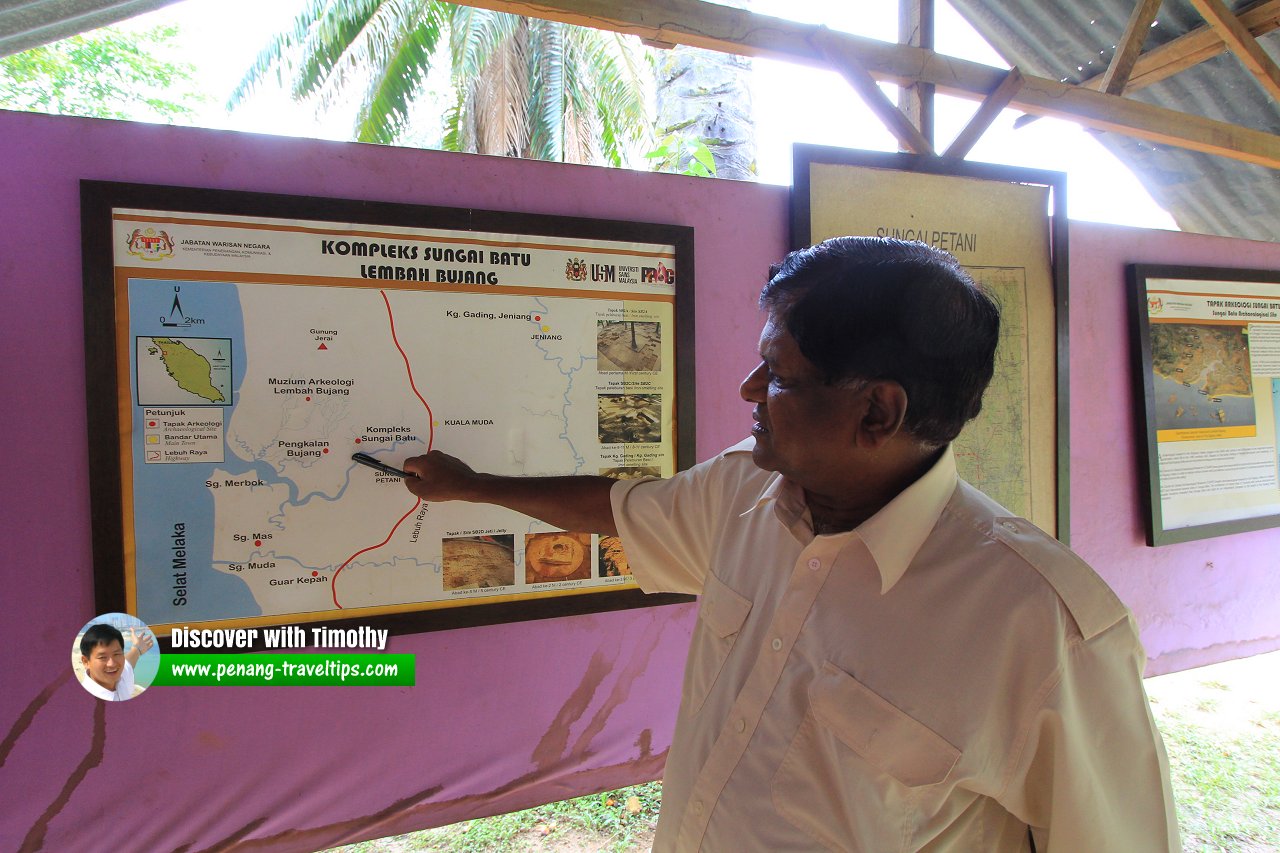 Dato V. Nadarajan explaining to me the Sungai Batu Archaeological Site. (11 August, 2015)
Dato V. Nadarajan explaining to me the Sungai Batu Archaeological Site. (11 August, 2015)
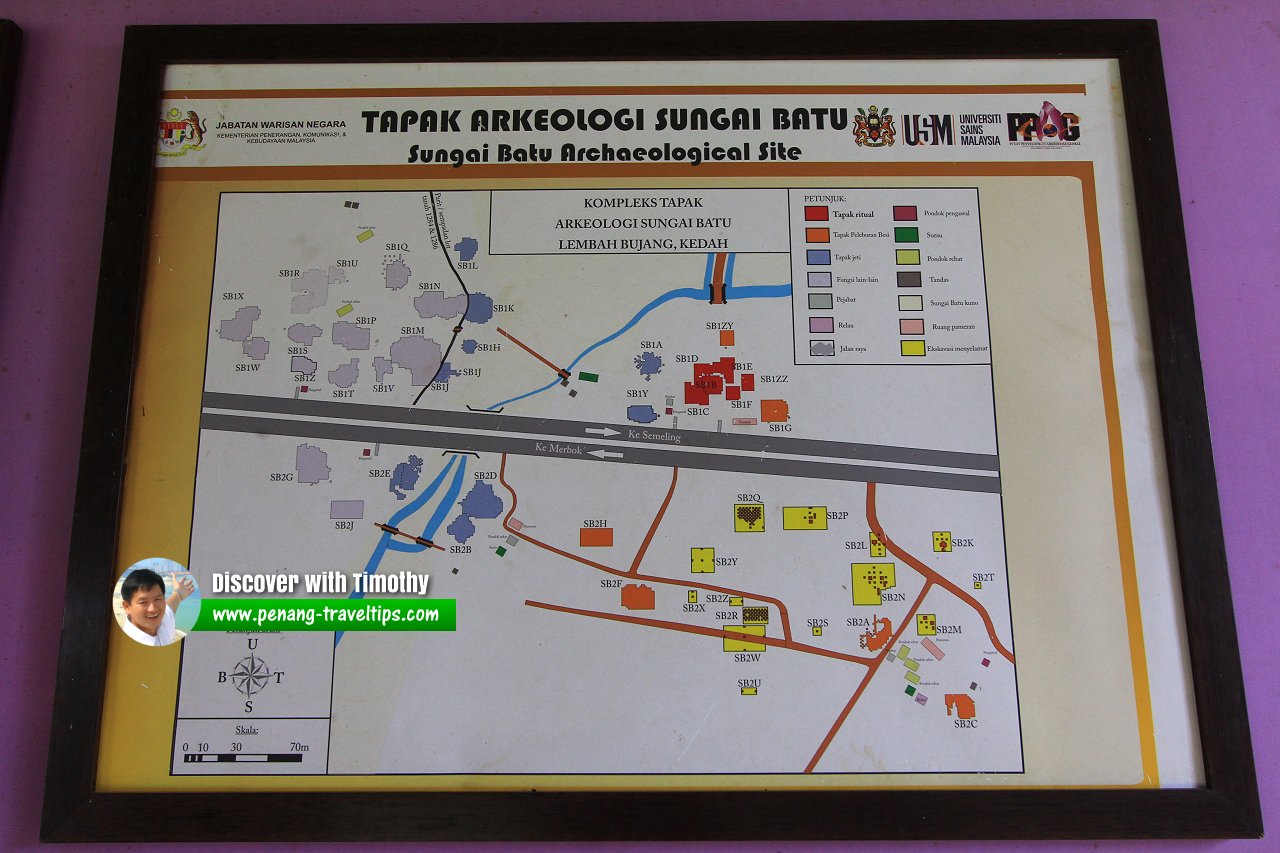 Overall plan of the Sungai Batu Archaeological Site (11 August, 2015)
Overall plan of the Sungai Batu Archaeological Site (11 August, 2015)
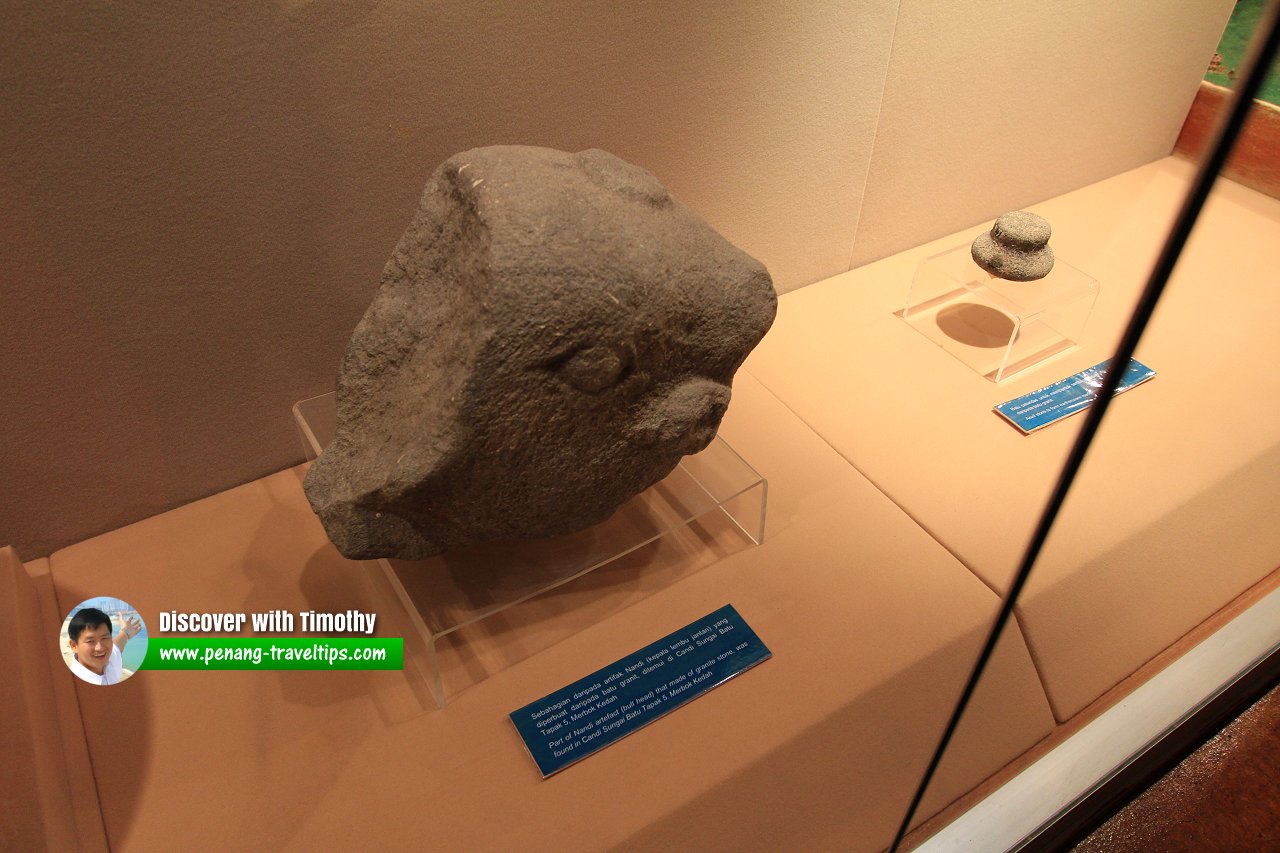 Nandi, Candi Sungai Batu (25 July, 2015)
Nandi, Candi Sungai Batu (25 July, 2015)
The above artefact is the head of Nandi, the sacred bull who is the mount and gatekeeper of the Hindu deity Shiva. This was discovered at Candi Sungai Batu, Site 5.
Updates on the Sungai Batu Archaeological Site
2 September, 2015 Discovery of ancient shipwrecks (or possibly, ships moored by the ancient pier) was made known to the media. These ships are buried between 5m and 10m underground, providing proof of ancient merchants arriving at the site thousands of years ago. According to archaeologists, there was once a river in that area that was 100 meters wide and 30 meters deep. The first ancient ship in that area was discovered in 2011. It is located a short distance from the site of the ancient brick jetty that was being excavated.Archaeologists have determined that the ancient people at the Sungai Batu site were smelting iron ore which was then exported back to southern India. This was long before the present Kedah Sultanate exists. Optically Stimulated Luminescence (OSL) readings of the site have provided indications that the settlement was about 2,500 years old, and may have existed for a few centuries.
Sungai Batu Archaeological Site is  on the map of Bujang Valley Archaeological Sites
on the map of Bujang Valley Archaeological Sites
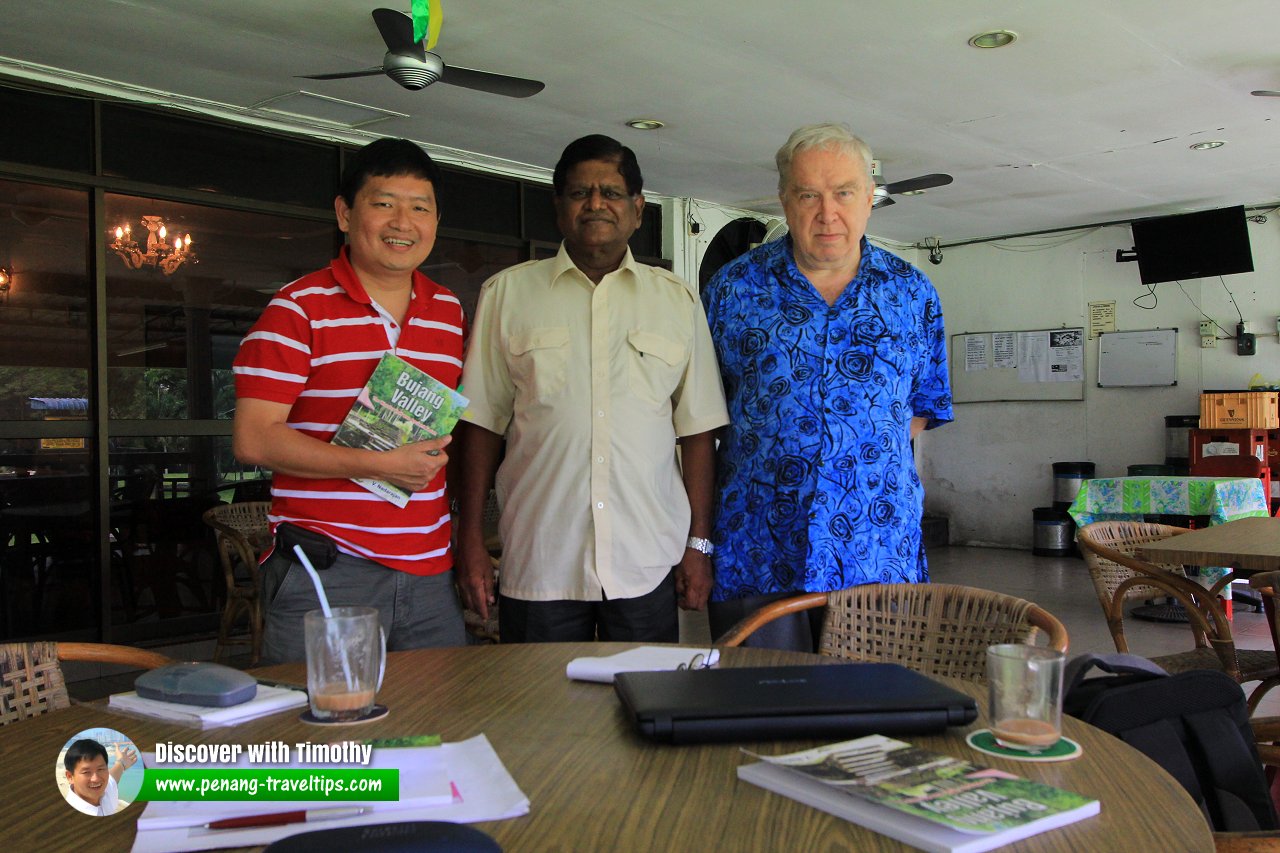 Here I am with Dato V. Nadarajan, author of Bujang Valley, and my fellow history enthusiast, Michael Rawlinson. (25 July, 2015)
Here I am with Dato V. Nadarajan, author of Bujang Valley, and my fellow history enthusiast, Michael Rawlinson. (25 July, 2015)
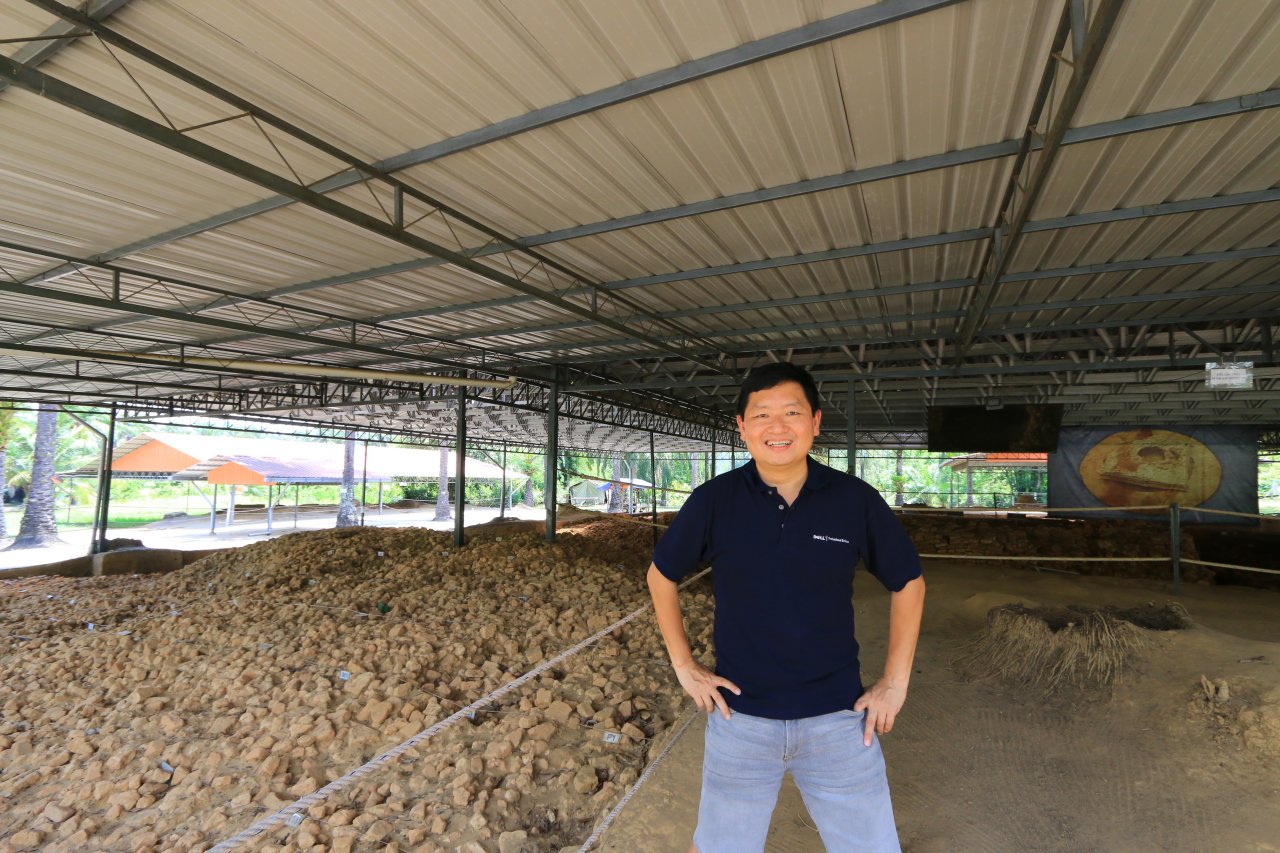 Here I am at the Sungai Batu Archaeological Site (23 April 2017)
Here I am at the Sungai Batu Archaeological Site (23 April 2017)
Sungai Batu Archaeological Site on Google Maps Street View
Sungai Batu Archaeological Site (Jan 2021)References
- The Star (3 March, 2014): Excavation to start at 47 archaeological sites in Sungai Batu, Merbok
- Borneo Post (5 June, 2012): Sungai Batu: Site of region's oldest civilization
Back to Discover Kedah mainpage; return to the Bujang Valley Archaological Sites main page
 Latest updates on Penang Travel Tips
Latest updates on Penang Travel Tips

Copyright © 2003-2025 Timothy Tye. All Rights Reserved.

 Go Back
Go Back